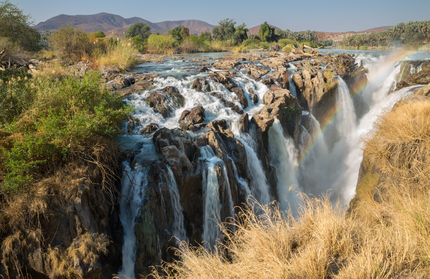Angola- Natural Disasters

Angola- Natural Disasters/ Extreme weather
Ravaged by a 27 year civil war which ended in 2002, Angola is currently one of the fastest growing countries in Africa, mainly due to huge proceeds from its oil industry.
The country however is enduring setbacks from perennial floods and droughts and epidemics that leave much to be desired. Coupled with the impact of the war which led to the death of over a million people and displaced millions in the process, the country is still facing obstacles in its socio-economic recovery despite recent rapid economic growth in major urban settlements.
Epidemics: Angola is highly prone to epidemics, of which cholera and viral hemorrhagic fever have been reported to be the most frequent ones. In 2006 alone, reports indicated that over 67,256 Cholera cases were recorded, leading to the death of 2,722 people as a result of heavy rainfall and floods. This according to a United Nation Inter-Agency Contingency Plan report in 2010 was followed by 18,390 cases and 515 deaths in 2007; and lastly 8,097 cases and 191 deaths in 2008 and in 2009 about 2,019 cases and 88 deaths were recorded in 2009.
In 2005 an outbreak of viral hemorrhagic fever in Uige province affected over 252 people leaving 227 dead. Other epidemics that have badly affected the country include the three Wild Polio Virus (WPV) which were found to be importations from India in 2005, they were (WPV1), 2007 (WPV2, which lasted for more than two years) and 2008 (WPV3).
Floods: Floods are seasonal in Angola. They are the most frequently reported disasters that have led to the loss of lives, arable lands, destruction of houses and other infrastructures. Floods in Angola lead to frequent landslides, deep ravines and soil erosion which affects over 18 provinces in the country annually.
The origins of these floods is said to be the Angolan Central Plateau where the Zambezi River flows through neighboring countries such as Zambia, Namibia and the Democratic Republic of Congo. In 2008 floods heavily affected the southern and south western provinces of Cunene, Cuando Cubango, Huila, Namibe and Benguela.
Drought: Another devastating natural seasonal disaster that rips the land apart leaving farmers with nothing to reap for. Reduced rainfall in southern and south-western parts of the country frequently lead to drought which, combined with progressive soil erosion, ravines and landslides, affects mainly rural communities with limited access to the rest of the country. This natural phenomenon which starts in May and continues until mid September destroys agriculture land and livestock, and increases food insecurity.

